Q & A with Malcolm Hadley, Lighting Cameraman
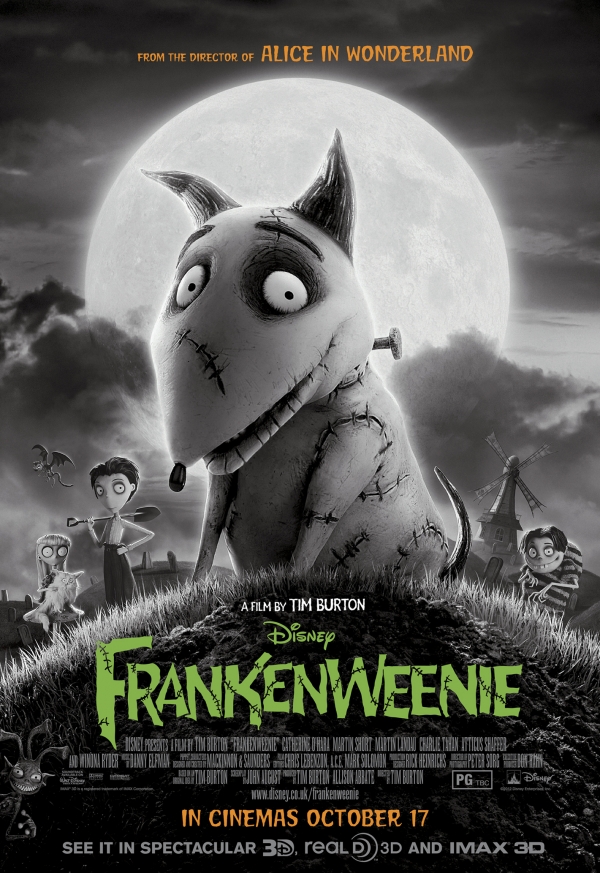
Malcolm Hadley is a freelance Director of Photography with a background in Stop motion animation.
His CV includes The Corpse Bride, Chicken Run and numerous commercials including spots for Orange, Peperami and McCains for companies like Partizan, Passion, Th1ng and Red Bee.
He was reunited with Tim Burton for Disney's Frankenweenie which has been nominated for the 2013 Best Animation Oscar....
Congratulations on the Oscar nomination for Frankenweenie. How does it feel?
It’s really fantastic for the film and that part of the business. A lot of people will have worked on more than one of those films so it’s a great achievement for all involved. Three of the nominated films are stop-motion (Frankenweenie, The Pirates! & Paranorman), it does show that that style is a viable and very successful format.
Being nominated for an Oscar shows that you are working on a high calibre project and it is a good feeling. I’ve been fortunate enough to work nominated films before but have yet to win. My first nominated film was in 2001 and called “The Periwig Maker”; that was working with just a handful of people so Frankenweenie is on the other end of the scale. If it wins, we will have a huge party!
Hundreds of people worked on Frankenweenie and hopefully the nomination will encourage those younger members of crew to continue working in stop-motion. To win an Oscar would be an added bonus, but inspiring another generation of talent would be a great achievement. Hopefully a win would encourage other studios to look at using stop-motion as well.
The DVD is out now, can you tell us about the extras on the disc?
I DoP’d an extra on the DVD called “Captain Sparky vs The Flying Saucers”. The character of Victor in Frankenweenie makes short films starring his dog Sparky and “Captain Sparky” is one of those films. It’s a self contained story, written by Derek Frey, who was Tim Burtons’ assistant and it was directed by Mark Waring, a brilliant animator from the film. After working on the big machine of the film, it felt liberating to work with Mark and just a few other people to create it.
We really enjoyed making it and you can work fast when it’s a streamlined process. It was just us making spontaneous decisions and working really quickly (about 3 weeks in all).
Since Frankenweenie, I’ve worked with Mark Waring on a couple of commercials for Academy. The Morrisons Christmas Ad where we animated a Turkey in a battle with Jo Hartley. We’ve also recently finished an Oxo commercial which has a really distinctive look.
orginal interview published in October 2012
What can you tell us about the story of Frankenweenie?
Frankenweenie is loosely based on Shelly’s Frankenstein story. Tim Burton’s love of the classic, 1930’s Universal horror films is very much apparent, as is a dose of the 50’s monster movie genre, which Tim grew up with.
It’s a really personal project for Tim Burton. He originally made Frankenweenie as a live action short for Disney in 1984. He’s wanted to recreate the film as a feature, animated entirely in stop motion, for some time.
The film tells the story of a boy called Victor who brings his dog Sparky spectacularly back to life after an accident. Sparky’s reanimation leads to things getting massively out of hand in their small town of New Holland, which results in some great humour and suspense. The film has a more epic scale in comparison to the original short and the feature length allows time for the audience to get more involved with the new characters and room for the story to grow. The stop motion treatment gives the film its own hand made texture, differentiating it from the usual CG animated movies on release.
I’ve shot a lot of stop motion over the years but the ambition and complexity of some of the shots was staggering and took an enormous combined effort to pull off, by a very dedicated and talented crew.
What was your role on the film and how is it working as part of a team?
I joined the film in pre-production as a Lighting Cameraman. I’ve been a Director of Photography for years but features such as Frankenweenie are set up a little differently to most projects with several shooting units, each headed up by an LC and supervised overall by a Director of Photography. I set about familiarising myself with the tests that the film's DoP, Peter Sorg, had shot. He’d been working on light and camera tests for some time and had a sequence of shots cut that demonstrated where the film was going photographically. My job was to pick up the style Pete had developed and to bring it to new setups as they arrived in the studio. The process is both fascinating and complex as there is no magic recipe or easy shortcut to achieve the look the DoP and Director are seeking. The spoken word is a relatively imprecise tool in defining anything more than just the general feel of what is required visually. Building the right look is more of an exploratory process on set. The LC, in the early stages of production, has to discover how the puppets and sets take the light, and understand what the camera sensor is giving them once the still image is processed onto the monitor. Each LC works independently and have their own lighting techniques and methods which are pretty individual and based on their own experience. The LC has a large degree of creative input which is influenced further by the Director and DoP in the final approval stages. I think the experience is a really challenging one. As an LC you have to be able to take criticism at times and learn to be a little less precious about your work than you might be as a DoP. You have to be prepared to make changes, rather than fall back on tried and tested methods. I think it ultimately makes you a better DoP.
The film is in Black and White, what did you shoot on and why?
Most stop motion productions nowadays shoot on digital still cameras (DSLR’s). We used a Canon 5D Mk. II which captured high resolution RAW files (data without any baked in colour space and compression) and we used predominantly Nikon lenses. There was certainly more than one camera that could have worked for the film. The 5D had the right combination of a good sensor (albeit susceptible to temperature change) and an excellent live view image in low light, for the animators to work with.
As important as camera choice was how the stills were processed and calibrated into black and white. It was crucial that all the LC’s were lighting to the same reference point for consistency. We had a calibration system developed which meant we could capture a still in full colour before the image was processed and displayed with a final print emulation, in black and white, on a calibrated monitor on set.
All of the LC’s gained their experience shooting on film, which is still the benchmark on which digital system are judged. The DSLRs have the huge advantage of giving instantaneous feedback across the production and of being extremely compact in comparison to 35mm film camera bodies. The build quality doesn’t compare to professional film gear but they (mostly) stood up to the rigours of production. I know we did end up cooking a few cameras though.
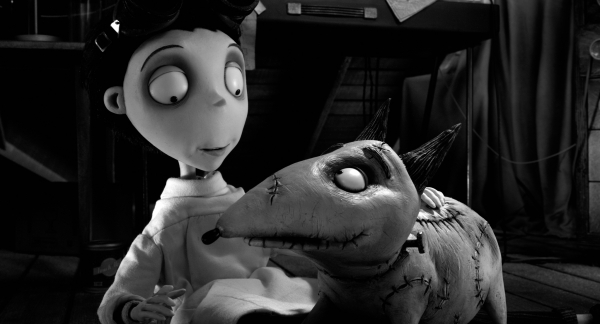
What is the daily shooting ratio on an animation like this and what are the greatest challenges you face?
The animators were scheduled to shoot between 2-4 seconds of footage per day. This sounds an incredibly small amount on paper but it’s pretty tough when you are trying to produce very subtle, extremely detailed and refined work. The animators were the actors of our film; they breathe life into every frame of the film through immaculately subtle performances. The trickiest shots are often the ones where the animation and camera had to be very tightly choreographed to work together. We used motion control, which is basically like programming a robotic rig to control all the regular axis of a camera move such as dolly, jib, pan, tilt and focus. Stop motion is shot in a completely linear fashion, executed from the first frame to the last. This technique demanded a huge amount of preparation before a shot began and because a shot can take days or even weeks to complete, the camera crews needed to have complete confidence that a particular pre programmed move would work flawlessly, that all the lighting, some of which could also be programmed, would be right both technically and on target for look and mood. Often an LC could have 6-7 or more sets on the go at once. There’s always a huge amount to keep in your head every day. The biggest challenge on set is to make the right choices at the right time, to communicate effectively, to trust your own instincts about shots and to keep moving your crew and sets along in the right direction. The hours are long so you have to be prepared to give up a lot of your life for months on end.
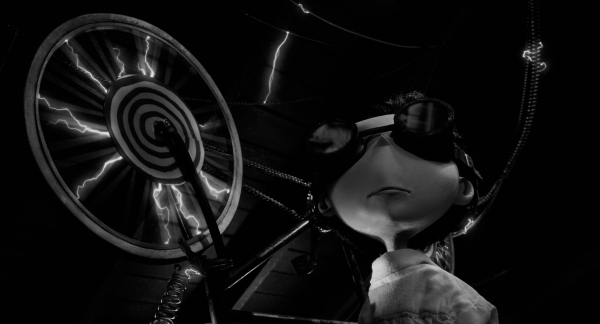
How do you light such small sets and maximise the drama of each scene?
Actually some of the sets on Frankenweenie were amongst the biggest stop motion sets I’ve ever worked on, some were more live action in scale than table top in size. The production took over three stages at Three Mills Studios and divided them up into nearly forty temporary units, of various sizes, which were moved and adapted on an almost daily basis.
It’s true that you do generally use smaller lights than on a live action film, but this has to do with exposure time as well as a set’s scale. We don’t have to capture our minute actors in real time at 24 fps but rather in single static poses so we can choose a much slower exposure time on camera. This in turn means we don’t need the same amount of light. When you light an actor who is around a foot high it does get extremely intricate. You have to find ways of cutting and shaping small sources. You might end up with a huge cluster of flags and nets surrounding the set, which looks messy off camera, but the end justifies the means. We had a fantastic array of tiny fluorescent lighting and miniscule LED sources much of which was developed in-house for practical lighting within the sets and could be pre-programmed to animate where necessary to produce flicker effects, lightning flashes or motivated sparks. A lot of the drama of each shot is influenced by lens choice, using low angles on wider lenses with the camera often pushed in quite close to the puppets. This would give the characters a nice volume and make their movements dynamic.
The key looks of Frankenweenie reference back to classic Hollywood black and white horror films and particularly the dramatic, shadowy world of Director James Whale and the b monster movie films of 50’s America. As good as those films are we weren’t trying to ape the genre of these films. I think the style of Frankenweenie has a richness and bite in its black and white photography that a modern audience will really engage with.
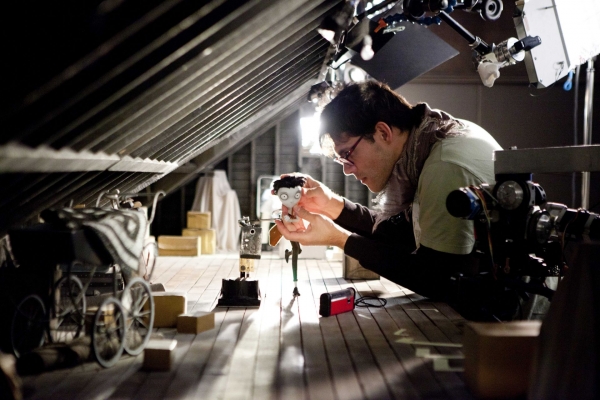
What’s been your proudest moment to date and which shot have you been most pleased with?
I think the pride and sense of achievement comes from seeing a great sequence come together in editorial. It's one thing to light a great looking shot but a tougher job to keep that together for a complete sequence. Elements of a stop motion sequence will generally be shot on many different units in the studio and sometimes many months apart. It’s your job to keep the look on target, matched and cohesive throughout.
I haven’t seen the film completely finished yet, so to see it screened with an audience will be the biggest high. One really memorable shot was a motion control sequence, animated beautifully by Jody Meredith. The shot contains several hidden dissolves and shows that despite the day to day world changing around Victor, he’s still absorbed in his own sadness and grief. We shot different portions of the move on several sets, relighting each new setup but meticulously matching the camera position and animation to make one seamless shot. It demanded a lot of technical attention to pull off and took several weeks to shoot. Shots like this are rarely attempted in anything other than feature films and it’s one of the reasons why I like to work on these kinds of film when they come along.
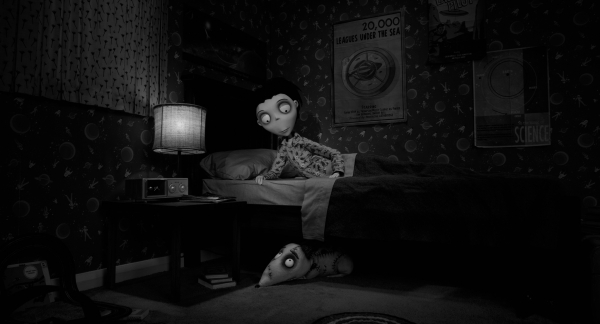
What’s the best piece of advice you’ve been given about filming?
It seems like the real veterans of Cinematography always talk about the simplicity of their approach, and tend to use less lights when really experienced than they did when they started out, learning how to achieve that takes most of a life time.
There’s a great book calledThe Masters of Light, (by Schaefer and Salvato) which still contains the most inspirational advice and reflection on Cinematography that I know. Words of wisdom by Gordon Willis, Michael Chapman, Conrad Hall and other top cinematographers of the 70’s and 80’s who really shook up the status quo. They represented a new generation of Cinematographers who were prepared to light in a different way to their predecessors. I also find Roger Deakins consistently impossible to disagree with.
If you could work with anyone, living or dead, or on any film, what would it be?
There’s too many! Although they’d be mostly dead Directors… I saw one of Hitchcock’s silent films ‘The Ring’ a few weeks ago at the Hackney Empire. He directed it aged 28. It was incredible and more compelling, entertaining and assured than any contemporary film I’ve seen for a long time. I’m a big fan of American film noir and suspense movies; can you imagine shooting Double Indemnity with Billy Wilder?
Malcolm Hadley is a member of thecallsheet.co.uk and members can see his full profile here and visit his website here. You can also follow him on Twitter